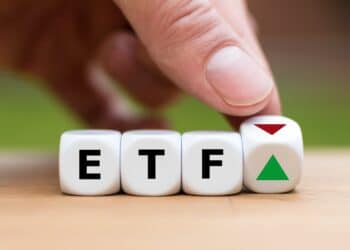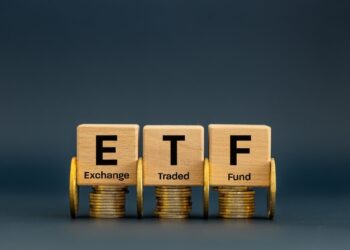You need look no further than the growing list of acronyms describing product structures – ETFs [exchange traded funds], ETMFs [exchange traded managed funds], LICs [listed investment companies], IMAs [individually managed accounts], SMAs [separately managed accounts], MDAs [managed discretionary accounts] – to see that the Australian investing landscape is becoming increasingly complex.
And over recent years, individual investors have become increasingly comfortable investing using the Australian Securities Exchange (ASX) platform, through online brokers and via their advisers – a factor which has seen listed investment choices begin to dominate the investment market.
LICs have been available to Australian investors since the 1930s, while ETFs are a much newer phenomenon. In their relatively short history ETFs have become an attractive investment choice for Australian investors and advisers with assets entrusted to this category of funds now surpassing that of the LIC market.
The LIC market in Australia now has 113 products and accounts for approximately $43 billion in funds under management (FUM), while there are now 194 ETFs listed on the ASX, managing more than $47 billion.
This fits the global pattern of growth, with ETFs enjoying a stellar rise all around the world. There are now about 6,500 ETFs listed on exchanges around the world holding
US$5 trillion in assets. But unlike other regions, much of the rapid growth of the ETF market in Australia has been driven by advisers and individual investors, particularly self-managed superannuation fund (SMSFs) investors.
SMSFs currently represent close to a third of all ETF investors. According to Investment Trends, there were about 385,000 SMSFs holding ETF investments as at October 2018, representing about eight per cent of their overall portfolio holdings. The same research in 2018 showed LICs represented about five per cent of SMSF portfolios.
The adoption of ETFs among planners continues to gain momentum, with 53 per cent of financial planners providing advice on ETFs in 2018, up from 45 per cent in 2017.
With so much change taking place in the listed investment space in recent years, you may be weighing up the relative benefits of different listed investment offerings for your clients – in particular, what ETFs can offer versus the more traditional LICs, being the two of the biggest categories of listed products.
LIC and ETF structures have lots in common, and some factors which differ, so it’s well worth taking the time to do your homework with so much choice available.
SO, WHAT ARE THE SIMILARITIES?
Both structures are listed investments, so they can be bought and sold on the stock exchange (note LICs are companies which issue shares while ETFs are trusts which issue units).
Both vehicles generally offer low fees, and can be tax efficient choices, and both are pass through vehicles for franking credits. Investors pay brokerage fees when buying and selling both ETFs and LICs.
But there are also differences and ETFs can offer significant advantages over LICs, based on three main factors valued by investors when making investment decisions – liquidity, transparency and diversification.
LIQUIDITY
LICs are closed investments so they can’t issue more shares promptly in response to investor demand. This means an LIC’s share price may not accurately reflect the value of its investments and shares can trade at a premium or discount to the net tangible assets (NTA).
ETFs are open ended, which means that demand does not impact the price of an ETF because the supply side is not fixed. ETFs can issue more units if there are more buyers and reduce the number of units if there are more sellers. ETF investors know that they can trade at a value close to the net asset value (NAV) of their investment.
The reason ETFs can maintain prices close to NAV is that their portfolios are continuously available to external market makers. These independent and external market makers, arbitrage between the prices of units in the fund and the underlying securities in the portfolio which pushes prices towards the NAV and creates liquidity.
LICs rarely trade at their NTA, often trading at a premium or discount, while ETFs remain steady around their NAV.
So, if you buy into an LIC when the share price is at a premium to the NAV, you could be paying more than the investment is worth. And if you are then looking to sell when the share price is at a discount, you could find it difficult to sell at a favourable price, potentially diluting your gain.
Of course, the opposite could be true, and you could benefit from buying at a discount and selling at a premium, but this doesn’t always hold true and some LICs have consistently traded at a discount to their NAV for long periods eroding investor returns
But the bottom line is that the LIC structure introduces a risk variable that’s outside your control. You can make the right call on an investment but if the LIC moves from premium to discount, you may not get the full rewards.
TRANSPARENCY
Disclosure rules mean that for most ETFs, investors can view daily baskets to understand exactly which companies they are holding through their investment in that ETF. The basket also allows investors to calculate the NAV of the ETF, so they not only know exactly how much they should be paying, they also have a realistic chance of getting close to that level. The intraday NAV for Vanguard ETFs, for example, is updated on our website every 15 seconds.
The ability to trade close to the NAV at all times means investors can make decisions based upon their portfolio needs rather than whether the product is trading at a significant premium or discount. With ETFs, performance is tied to the market and the trading of the underlying securities, not demand for the product.
LICs are not as transparent due to the nature of their investments and delays in disclosing portfolio holdings.
DIVERSIFICATION
One of the primary reasons investors cite for their increasing appetite for ETFs is the diversification they offer at a low cost.
And ETFs have served up an option which has proved particularly attractive to SMSFs who typically lack international equity and fixed income diversification in their portfolios.
While an LIC typically invests in several listed companies, an equity index ETF may invest in most or all of the shares in global benchmark indices. This can vary from tens of individual securities, to thousands.
The 194 ETFs available to Australian investors cover most asset classes and markets so you can easily tailor and adjust client portfolios to their needs using ETFs.
Balaji Gopal is head of product strategy at Vanguard Australia.





